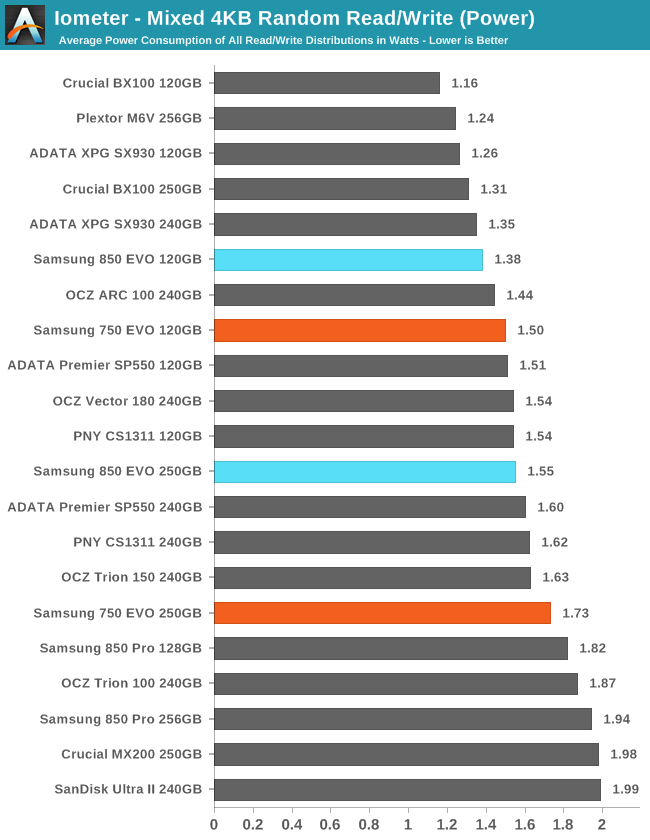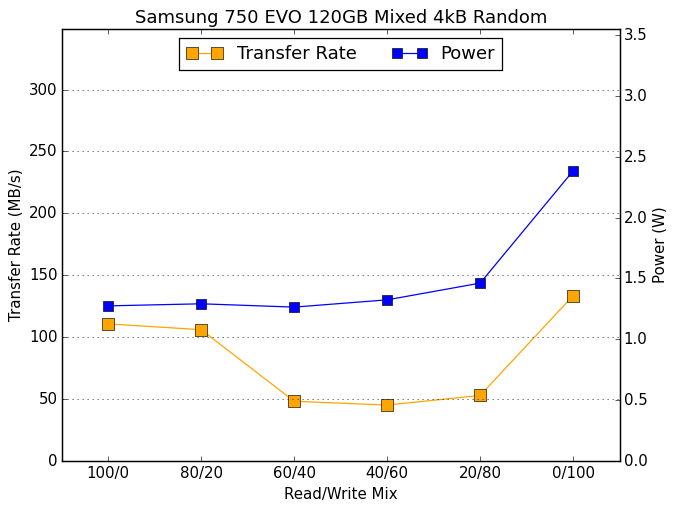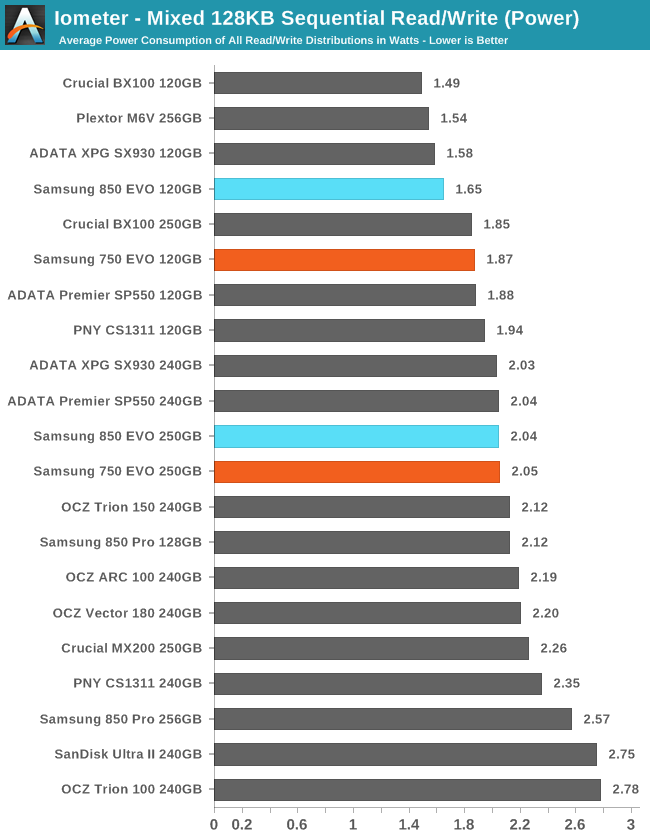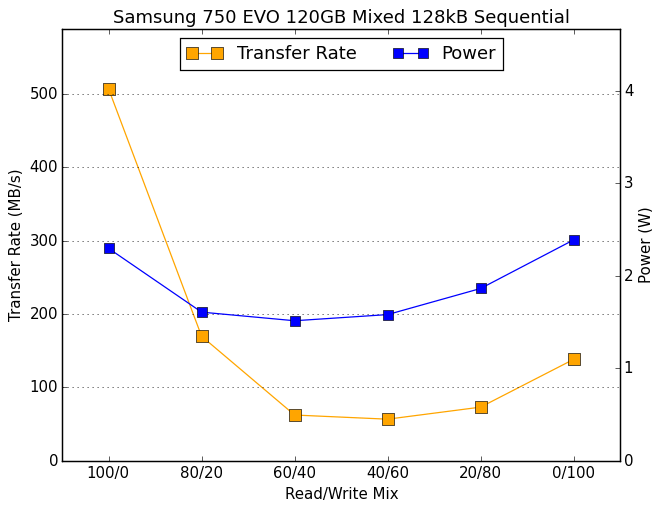The Samsung 750 EVO (120GB & 250GB) SSD Review: A Return To Planar NAND
by Billy Tallis on April 22, 2016 8:00 AM ESTMixed Random Read/Write Performance
The mixed random I/O benchmark starts with a pure read test and gradually increases the proportion of writes, finishing with pure writes. The queue depth is 3 for the entire test and each subtest lasts for 3 minutes, for a total test duration of 18 minutes. As with the pure random write test, this test is restricted to a 16GB span of the drive, which is empty save for the 16GB test file.

The 750 EVO outperforms any non-Samsung drive of similar capacity on the mixed random I/O test, and the 120GB 750 EVO even beats a few MLC drives with twice the capacity.

The 750 EVO has above-average power efficiency during the mixed random I/O test.
 |
|||||||||
Most drives lose performance during the middle phases of the mixed random I/O test. High performance scores on this test rely on performance bouncing back during the final phase of the test when the workload shifts to pure writes. The 750 EVO's spike at the end is noticeable though not huge, but it also benefits from comparatively good performance in the first two sub-tests.
Mixed Sequential Read/Write Performance
The mixed sequential access test covers the entire span of the drive and uses a queue depth of one. It starts with a pure read test and gradually increases the proportion of writes, finishing with pure writes. Each subtest lasts for 3 minutes, for a total test duration of 18 minutes. The drive is filled before the test starts.

Unlike for the mixed random I/O test, most MLC drives are able to maintain a clear performance lead over the planar TLC drives—including the 750 EVO.

The 750 EVO's power consumption is low enough that it is clearly the most efficient planar TLC drive, but its efficiency doesn't beat a typical MLC drive.
 |
|||||||||
The 750 EVO has great read speed, but it bottoms out at a relatively low level during the middle of the test and doesn't bounce back at the end as much as most MLC drives and the 850 EVO.










109 Comments
View All Comments
ewitte - Tuesday, May 24, 2016 - link
System builders will likely go even cheaper there are a lot of 240GB drives around $60. Nearly a $20 difference.Murloc - Saturday, April 23, 2016 - link
They're going to put it into computers and write "Samsung SSD inside" and it will be cheaper for the system builders, but the average customer will not be able to tell the difference.So yes, it's a winner.
lilmoe - Friday, April 22, 2016 - link
You think $10 is worth the downgrade? Bruh...5th element - Friday, April 22, 2016 - link
To the 3rd party selling complete machines to the everyday masses yeah. Like haukionkannel said above. Most people out there aren't tech heads and the lower £££ matters.lilmoe - Saturday, April 23, 2016 - link
Sure, but the price difference is even lower with higher volume...nathanddrews - Friday, April 22, 2016 - link
Meh.Thanks for the great review - as always. The "meh" is just for the drive itself.
nathanddrews - Friday, April 22, 2016 - link
The problem I have with SSDs right now is that they're so boring to me. What I need in my life are consumer grade NVMe 2TB+ SSDs. I'm sick and tired of buying multiple SSDs or splitting my application and data across SSDs and HDDs. One drive to rule them all, please.TheinsanegamerN - Friday, April 22, 2016 - link
We should probably work on getting 1TB drives out and purchasable before worrying about 2TB models.vanilla_gorilla - Friday, April 22, 2016 - link
Samsung 850 EVO 1TB SSD are $291 on Amazon (Prime) right now. And the Samsung 850 EVO 2TB is the same price per gigabyte ($600 for 2TB).Meteor2 - Friday, April 22, 2016 - link
I don't know about 2+ TB but definitely more 1 TB NVMe drives. SATA is yesterday's tech.